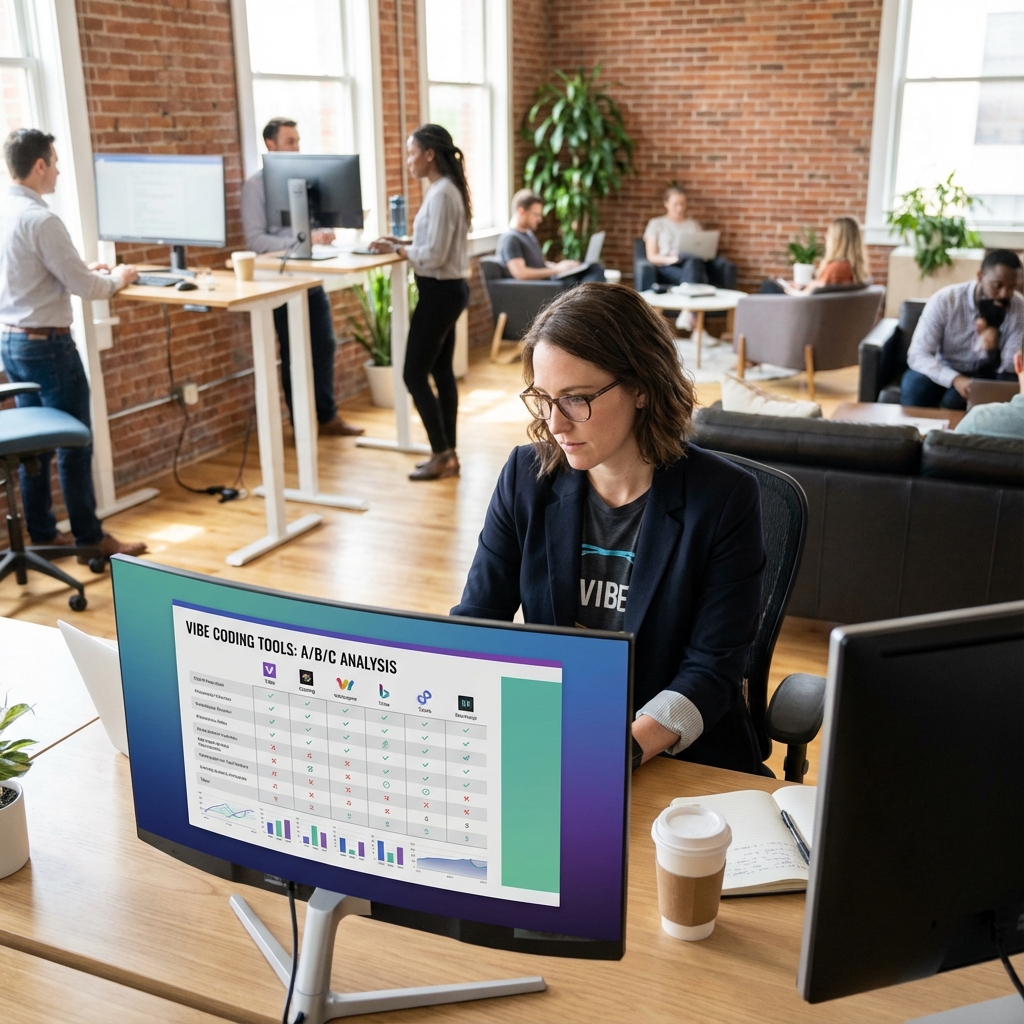The Future of Web Development 2025: AI Agents, Vibe Coding, and No-Code 2.0

The Future of Web Development 2025: AI Agents, Vibe Coding, and No-Code 2.0
TL;DR
Web development is shifting from writing code to orchestrating intelligence.
- Vibe Coding: Describe outcomes, let AI handle implementation.
- AI Agents: Autonomous tools like Windsurf and Devin fix bugs and plan features.
- No-Code 2.0: Bolt.new and Lovable build full-stack apps from prompts.
- The Browser: WebAssembly is making the browser a powerful OS.
- Advice: Learn to prompt, focus on architecture, and embrace the new tools.
Table of Contents
- The Rise of "Vibe Coding"
- Autonomous AI Agents
- No-Code 2.0 Revolution
- WebAssembly & The Browser
- The Death of "Localhost"?
- What This Means for You
- Conclusion
The prediction that "AI will replace programmers" was half-right. In 2025, AI hasn't replaced programmers—it has evolved them. We are witnessing the most significant shift in the history of software development: the transition from writing code to orchestrating intelligence.
Welcome to the era of Vibe Coding, AI Agents, and No-Code 2.0.
1. The Rise of "Vibe Coding"
As Andrej Karpathy famously tweeted in early 2025, we have entered the age of "Vibe Coding". This isn't just a meme; it's a fundamental shift in workflow.
- Old Way: Write logic, debug syntax, manage imports, fix typos.
- New Way: Describe the vibe, the outcome, and the behavior. The AI handles the implementation.
Developers are no longer "typing" code; they are reviewing it. The skill ceiling has raised, not lowered. You need to understand systems, architecture, and user experience more than ever, because the AI can write the functions, but it can't design the soul of the application.
2. Autonomous AI Agents: From Copilots to Coworkers
We've moved past "Copilots" that wait for you to type. 2025 is the year of the Agent.
Tools like Windsurf (Cascade) and Devin (by Cognition) are autonomous. They don't just suggest code; they:
- Plan: Break down complex features into steps.
- Act: Run terminal commands, install packages, and create files.
- Fix: Read error logs and self-correct without human intervention.
Prediction: By the end of 2025, 40% of routine bug fixes and dependency updates will be handled entirely by autonomous agents running in the background.
3. No-Code 2.0: The "Prompt-to-App" Revolution
The line between "No-Code" and "Pro-Code" has vanished. New platforms allow you to generate full-stack, production-ready applications just by talking to them. Find the best tools for this revolution in our Vibe Coding AI App Directory.
Bolt.new
Bolt.new (by StackBlitz) allows you to prompt, edit, and deploy full-stack web apps directly in the browser. It's not a toy; it gives you a real dev environment with Node.js, allowing for granular control when you need it.
Lovable
Lovable takes it a step further, aiming to be "GPT for Apps". It focuses on the "conversation" of building software, allowing non-technical founders to build MVPs that are indistinguishable from hand-coded apps.
Why this matters: The barrier to entry for building software has collapsed. "Ideas" are now the scarcest resource, not "execution".
4. WebAssembly (Wasm) & The Browser as an OS
While AI steals the headlines, WebAssembly continues to quietly revolutionize what's possible in a browser.
- Photoshop in the browser? Old news.
- Video editing, 3D rendering, and local LLMs? That's 2025.
With WebGPU and Wasm, we are running local AI models (like Llama 3 or Phi-3) directly in the user's browser, preserving privacy and reducing server costs.
5. The Death of "Localhost"?
Cloud development environments (CDEs) are becoming the standard. With tools like GitHub Codespaces, Project IDX (Google), and Daytona, the concept of "works on my machine" is dying.
- Instant Onboarding: New devs spin up a fully configured environment in seconds.
- AI Integration: Cloud environments have access to massive compute for AI agents that a local laptop can't match.
6. What This Means for You
If you are a Junior Developer:
Don't panic. But do adapt.
- Learn to Prompt: Your ability to guide an AI is now a technical skill.
- Focus on Architecture: Learn how pieces fit together (Databases, Auth, APIs).
- Build Things: You can now build apps 10x faster. Build a portfolio that proves it.
If you are a Senior Developer:
You are now a Technical Lead of an AI team.
- Your "juniors" are AI agents.
- Your job is code review, system design, and ensuring security/scalability.
- You are more valuable than ever because you know when the AI is hallucinating.
Conclusion: The Golden Age of Creation
The future of web development isn't about writing less code; it's about building more value. We are entering a Golden Age of Creation where the distance between "I have an idea" and "It's live" is shorter than ever before.
Embrace the vibes. Trust the agents. Build the future.
Ready to join the revolution? Check out our guide on Choosing the Right AI Assistant to get started.
About Vibe Coding Team
Vibe Coding Team is part of the Vibe Coding team, passionate about helping developers discover and master the tools that make coding more productive, enjoyable, and impactful. From AI assistants to productivity frameworks, we curate and review the best development resources to keep you at the forefront of software engineering innovation.




